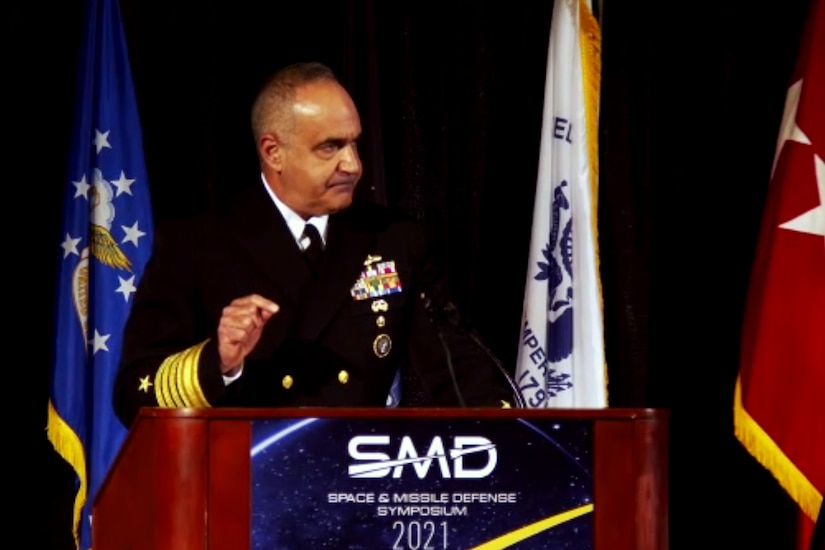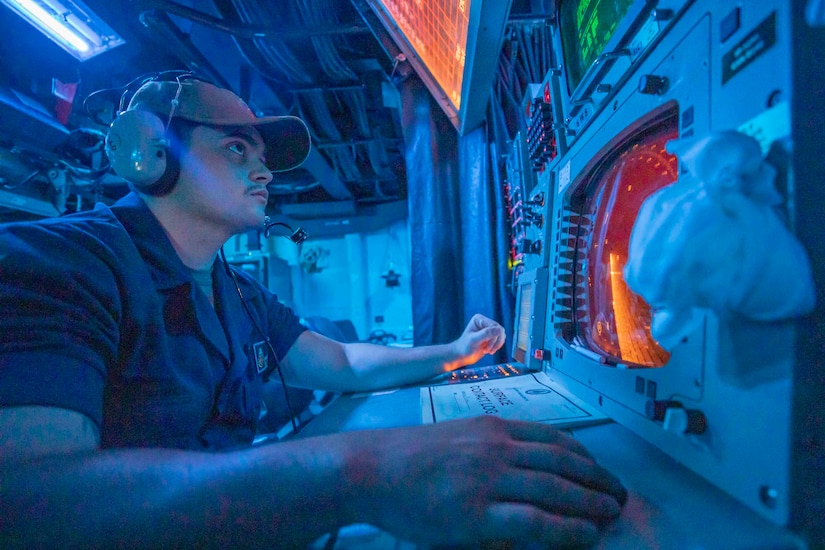Aug. 12, 2021 | , DOD News
The U.S. is now navigating through uncharted waters with the possibility of strategic deterrence failing under rapidly growing threats from China and Russia, the commander of U.S. Strategic Command said.

Navy Adm. Charles A. Richard described those threats and provided solutions through integrated deterrence in all domains, both conventional as well as nuclear, across the services and in tandem with allies and partners when he spoke today at the Space & Missile Defense Symposium in Huntsville, Alabama.
Threats From China
"We are witnessing a strategic breakout by China. The explosive growth and modernization of its nuclear and conventional forces can only be what I describe as breathtaking. And frankly, that word breathtaking may not be enough," he said.
China is rapidly improving its strategic nuclear capability and capacity, Richard said. It's growing and enhancing its missile force, including multiple independently targetable reentry vehicles. These include intermediate range ballistic missiles, mobile ICBMs and submarine-launched nuclear ballistic missiles.

Beijing is also pursuing advanced weapons such as hypersonics, he said.
"Because of these challenges our current terrestrial- and space-based sensor architecture may not be sufficient to detect and track these hypersonic missiles," he said.
In 2019, China tested more ballistic missiles than the rest of the world combined, he noted.
Beijing is also developing a modern nuclear command and control capability and is modernizing its conventional forces to include ships, submarines and aircraft, he added.
"They have the largest Navy in the world and they have the third largest air force in the world," he said.
Threats From Russia
Russia continues to use a wide range of capabilities that are below the threshold of conflict, such as cyber and state-sponsored coercion of nations, seeking to solidify great power status, Richard said.

Russia is pursuing modernization of its conventional and strategic forces, he said. Nuclear weapons remain a foundational aspect of Russia's strategy and they have recapitalized over 80% of their strategic nuclear forces, including expanded warhead delivery capacity.
Like China, Russia is investing heavily in developing hypersonic weapons and a variety of other missiles, he said.
Deterring China and Russia
Nuclear modernization is a Defense Department priority for deterrence, Richard said.
That modernization includes not just the nuclear triad, it also includes investing in a nuclear command and control system that is protected against cyberattacks, he said.
"Every operational plan in the Department of Defense, and every other capability we have, rests on an assumption that strategic deterrence will hold. And if strategic deterrence, and in particular nuclear deterrence, doesn't hold, none of our other plans, and no other capability that we have is going to work as designed," Richard said.

Richard also mentioned bolstering conventional forces, missile defense and standing up the Joint Al-Domain Command and Control system. Developing and fielding hypersonics and high-energy laser weapons are also very important.
To better understand and respond to national security threats, the department needs to harness America's great intellectual community, as it has done before with the RAND Corporation, he said.
The ongoing National Defense Strategy, Nuclear Posture Review and Missile Defense Review, are the ideal means to address the threats, inform decision makers and inform the department's path forward.
Industry as well needs to shore up the nation's defenses by delivering needed technology and systems on time and at reasonable cost, he said.
The importance of allied and partner interoperability and rigorous joint and combined war games and exercises cannot be overstated, Richard said.







No comments:
Post a Comment